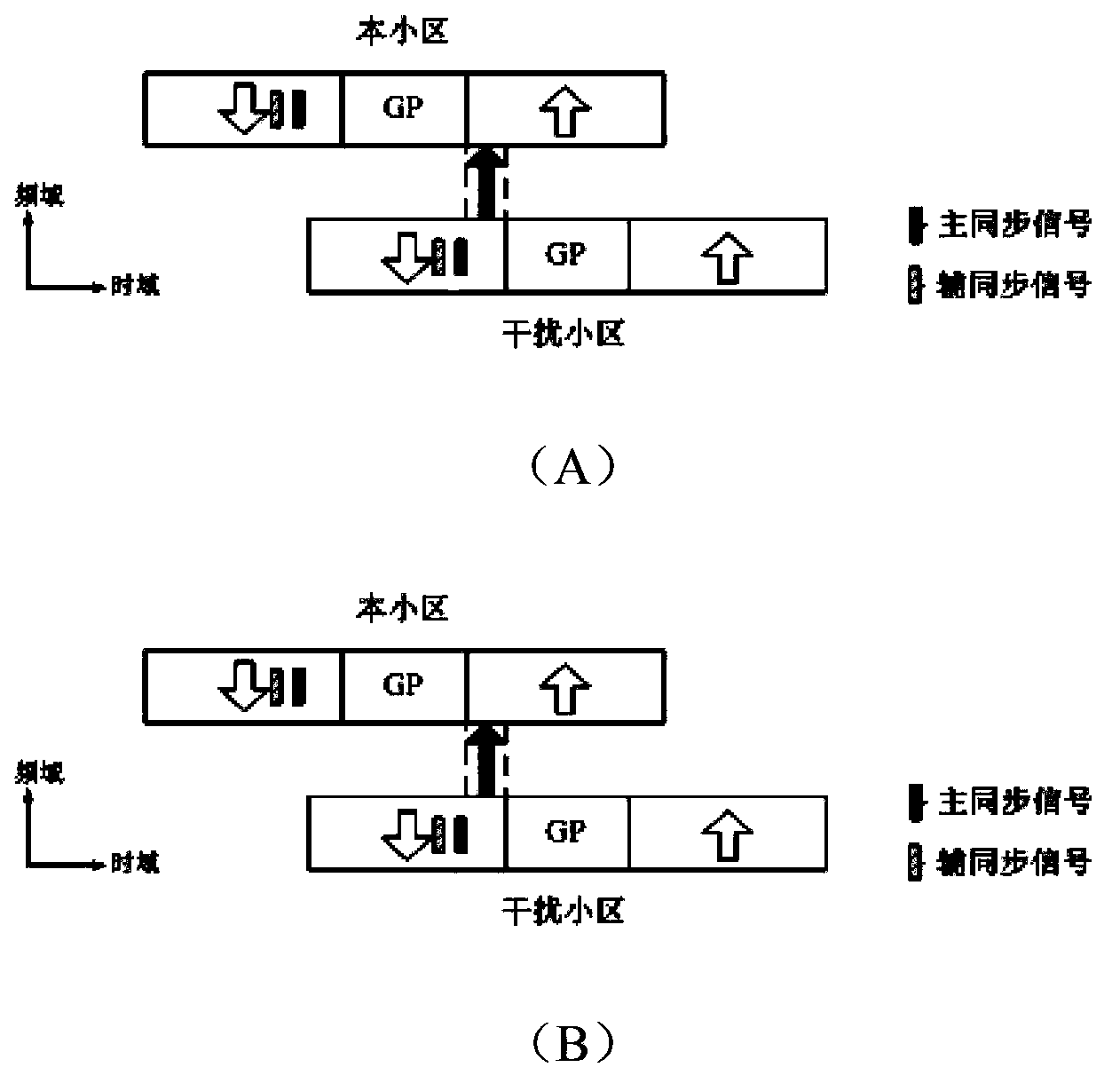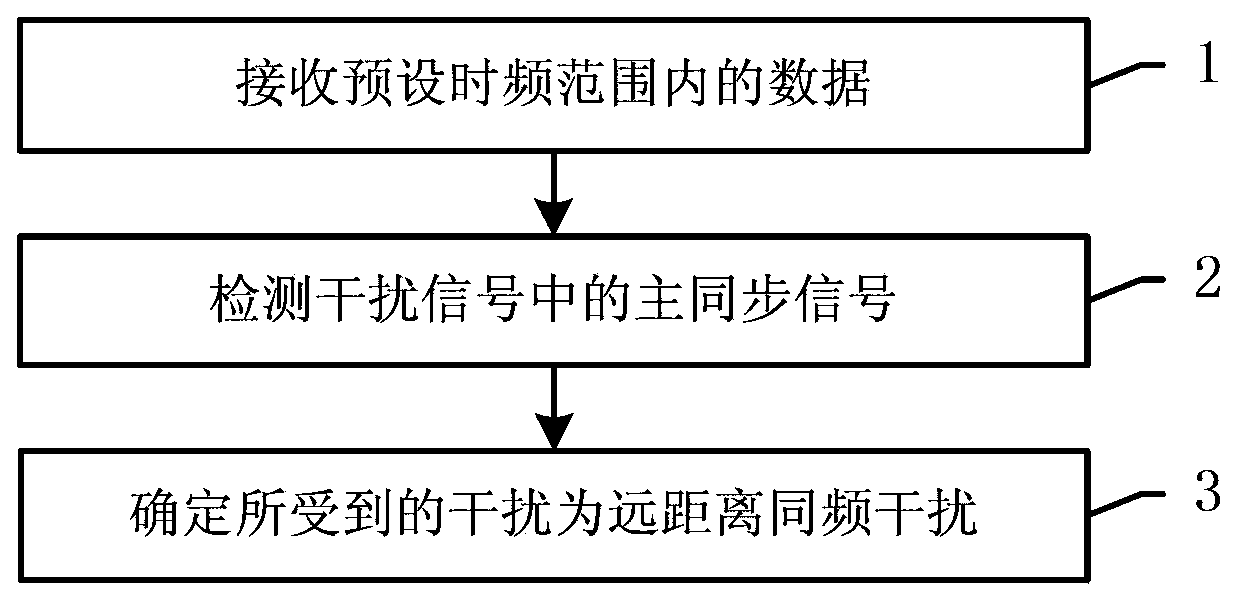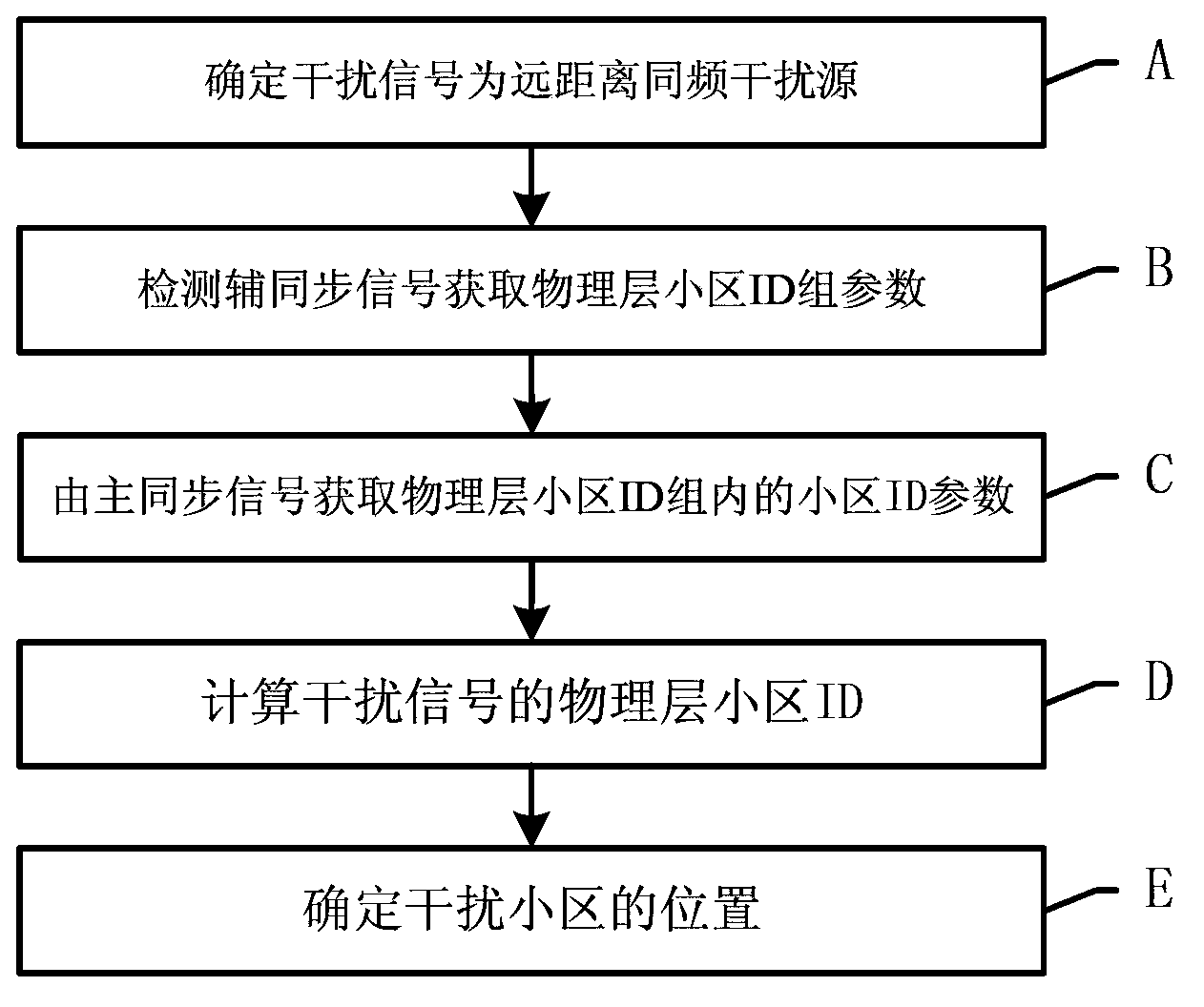Long distance cofrequency interference source detection and positioning method for TD-LTE system
A co-channel interference and detection method technology, applied in electrical components, wireless communication, etc., can solve problems such as low operating efficiency, decreased accuracy, inaccurate positioning, etc., achieve good stability and accuracy, save manpower and material resources, and The effect of related properties
- Summary
- Abstract
- Description
- Claims
- Application Information
AI Technical Summary
Problems solved by technology
Method used
Image
Examples
Embodiment
[0049] see figure 1 (A) and figure 1 (B), which are respectively schematic diagrams of close-range co-channel interference and long-distance co-channel interference in a TD-LTE system. It can be seen from the figure that when the interfering cell is relatively close, the signal transmission delay of the interfering cell to the local cell is small, and does not exceed the uplink and downlink guard interval GP of the TD-LTE system. The interference of the downlink signal of the cell, and the interference of the uplink signal of the interfering cell to the uplink signal of the own cell. However, if under special terrain and climatic conditions, the signal from a distant cell can reach the local cell through long-distance transmission, and the transmission delay is relatively large, exceeding the guard interval GP. Uplink signal interference.
[0050] see Figure 4 , in the TD-LTE system, the downlink synchronization signal is divided into the primary synchronization signal PS...
PUM
 Login to View More
Login to View More Abstract
Description
Claims
Application Information
 Login to View More
Login to View More - R&D
- Intellectual Property
- Life Sciences
- Materials
- Tech Scout
- Unparalleled Data Quality
- Higher Quality Content
- 60% Fewer Hallucinations
Browse by: Latest US Patents, China's latest patents, Technical Efficacy Thesaurus, Application Domain, Technology Topic, Popular Technical Reports.
© 2025 PatSnap. All rights reserved.Legal|Privacy policy|Modern Slavery Act Transparency Statement|Sitemap|About US| Contact US: help@patsnap.com



